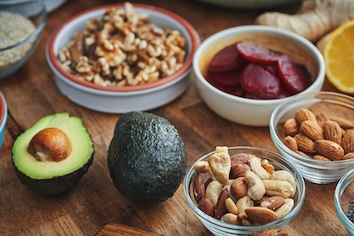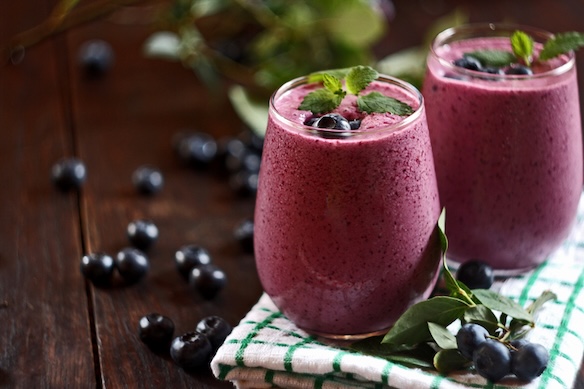When it comes to maintaining a healthy diet or managing your weight, one of the biggest challenges is hunger. Constant cravings and energy dips can make even the most dedicated nutrition plan difficult to follow. That’s where high-satiety foods come in. These are foods that keep you feeling full for longer, helping you avoid overeating while still giving your body the nutrients it needs. By focusing on satiety, you can create a balanced approach to eating that supports both satisfaction and long-term health. Here, we'll explore why satiety matters and the high satiety low calorie foods you can add to your diet to help you feel fuller for longer.
What satiety means and why it matters
Satiety refers to the feeling of fullness and satisfaction after eating. It’s not just about the physical act of filling your stomach—it also involves how your body processes nutrients and regulates hunger hormones. When a meal is high in satiety, you feel less of an urge to snack soon afterward, which can prevent overconsumption of calories.
Why does this matter? Because chronic overeating is often linked not to a lack of willpower, but to meals that don’t keep us satisfied. Foods high in refined carbohydrates or added sugars may give you a quick energy boost, but they cause blood sugar spikes and crashes that leave you hungry again shortly after. Choosing foods that provide steady energy and promote satiety helps you naturally manage your appetite, stabilize mood and energy levels, and support weight management goals without feeling deprived.
Role of protein in keeping you full
Protein is one of the most powerful nutrients when it comes to satiety. It slows down digestion, helps regulate hunger hormones like ghrelin, and supports muscle maintenance—all of which make it a cornerstone of a satisfying diet.
Studies show that high-protein meals reduce hunger more effectively than meals centered on fats or carbohydrates. For example, eating eggs for breakfast instead of a bagel can help reduce calorie intake later in the day. This is because protein-rich foods take longer to break down, keeping you full and energized for longer stretches.
Some excellent high-protein, high-satiety options include:
- Eggs and Greek yogurt for breakfast
- Lean poultry, fish, or tofu for lunch and dinner
- Lentils, beans, and edamame for plant-based options
- Protein-rich snacks like cottage cheese or jerky (low-sodium)
Building meals with a protein anchor—such as grilled chicken in a salad or beans in a grain bowl—can dramatically increase satiety and help you avoid overeating.
How fiber supports appetite control
Fiber is another critical nutrient for feeling full. Unlike other carbohydrates, fiber isn’t fully digested by the body. Instead, it slows down digestion, adds bulk to meals, and helps regulate blood sugar levels. This combination creates a lasting sense of fullness and prevents sudden spikes and dips in hunger.
There are two main types of fiber:
- Soluble fiber absorbs water and forms a gel-like substance, which slows digestion and promotes steady energy release. Oats, apples, beans, and chia seeds are rich in soluble fiber.
- Insoluble fiber adds bulk to stool and supports digestive health. Whole grains, nuts, and vegetables like broccoli and carrots are good sources.
High-fiber foods tend to be lower in calories but higher in volume, meaning you can eat more of them without consuming excess calories. A large salad, a bowl of vegetable soup, or a serving of oatmeal all provide filling fiber without overloading on energy-dense foods.
Benefits of water-rich fruits and vegetables
Hydration plays a surprising role in satiety, and water-rich fruits and vegetables can help bridge the gap between meals. These foods provide both bulk and hydration with relatively few calories, making them ideal for weight management.
For example:
- Cucumbers, watermelon, and oranges are more than 85% water
- Leafy greens like spinach and lettuce provide volume and nutrients while being extremely low in calories
- Soups and broths made with vegetables are hydrating and satisfying
Because water adds volume without adding calories, water-rich foods physically fill your stomach, triggering stretch receptors that signal fullness to your brain. Combining these foods with protein or healthy fats makes meals even more satisfying.
Healthy fats for lasting fullness
While fats are more calorie-dense than protein or carbs, they play a critical role in satiety. Healthy fats slow digestion and promote the release of hormones that help regulate appetite. The key is choosing the right types of fats and consuming them in moderate amounts.
Sources of healthy fats include:
- Avocados
- Nuts and seeds
- Olive oil
- Fatty fish (like salmon)
Including a small portion of healthy fat in meals—for example, a drizzle of olive oil on vegetables or a handful of almonds as a snack—helps you feel fuller longer. The richness of these foods also enhances flavor, making healthy eating more enjoyable and sustainable.
Low-calorie high-satiety snack ideas
Snacking is where many people struggle with hunger and overeating. The key is choosing snacks that are both satisfying and nutrient-dense. Here are some options that balance protein, fats, carbs, fiber, and volume without adding too many calories:
- Apple slices with peanut butter
- Greek yogurt with berries
- Air-popped popcorn with a side of string cheese
- Carrot sticks with hummus
- Cottage cheese with cucumber slices
These options provide the nutrients needed to tide you over until your next meal while preventing energy crashes or cravings.
Tips for building satisfying balanced meals
To create high-satiety meals consistently, think about balance and variety. A well-rounded meal includes:
- Protein as the anchor—chicken, fish, beans, or tofu
- Fiber from whole grains, legumes, or vegetables
- Healthy fats from avocados, nuts, seeds, or olive oil
- Volume and hydration from water-rich vegetables and fruits
For example, a balanced dinner could be grilled salmon with roasted vegetables, a quinoa salad with chickpeas, and a side of steamed broccoli. Not only is this nutrient-dense, but it also provides the protein, fiber, and fats needed to stay full.
Other tips to help you stay full for longer include:
- Eating slowly to allow your body time to register fullness
- Avoiding refined carbs and added sugars, which can trigger hunger quickly
- Planning meals and snacks ahead to reduce impulsive eating choices
By combining these strategies, you’ll build meals that fuel your body, satisfy your appetite, and reduce unnecessary snacking.
How Evidation can help you meet your nutrition goals
Tracking your eating habits and health outcomes can be one of the most effective ways to stay accountable. That’s where Evidation comes in. The Evidation app allows you to connect the health data you're already tracking. We look for patterns and find trends, then provide you with personalized, content-based insights that can help you make the decisions that take you one step closer to your goals. Click here to learn more about how Evidation works and get started today.











